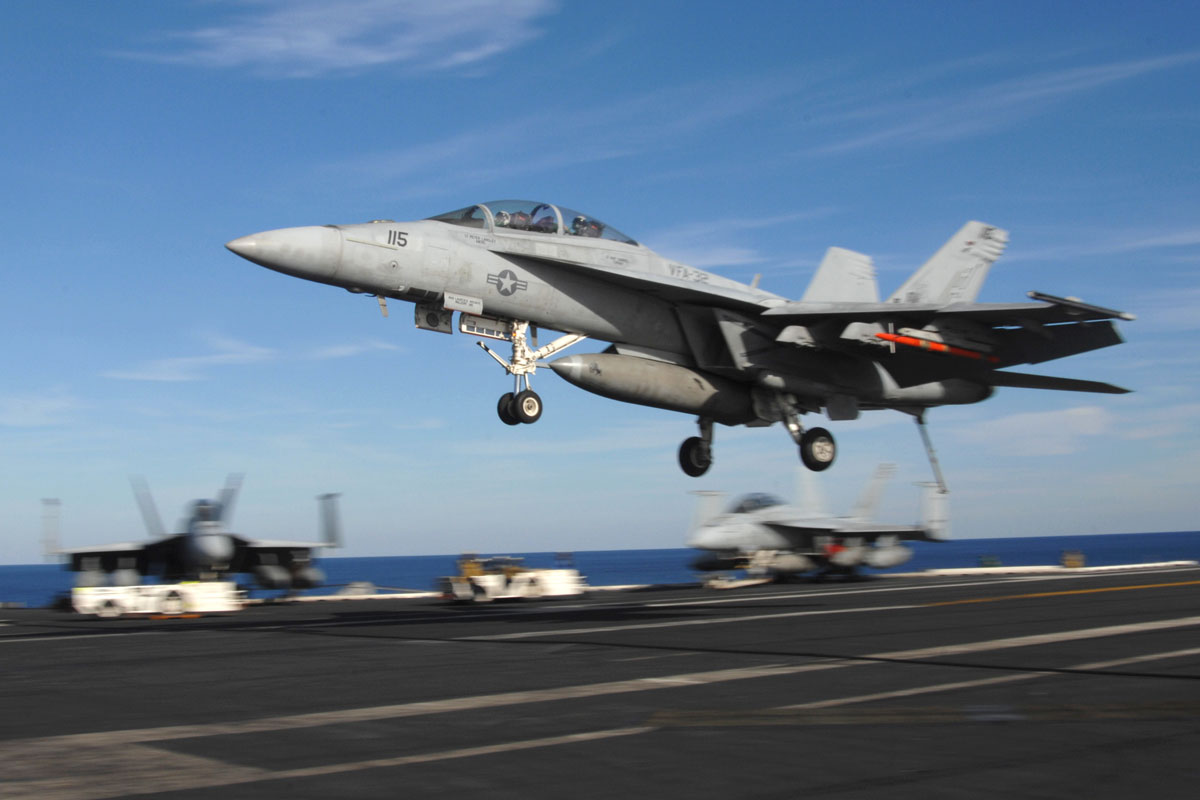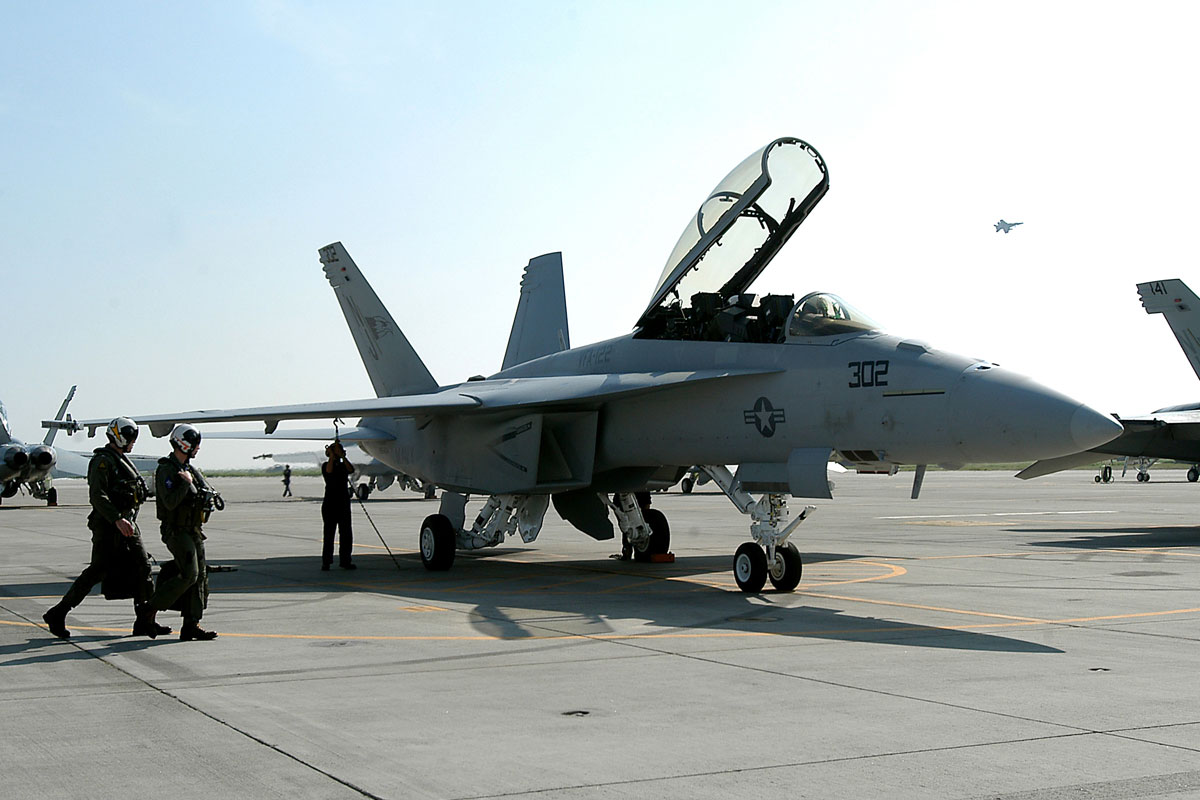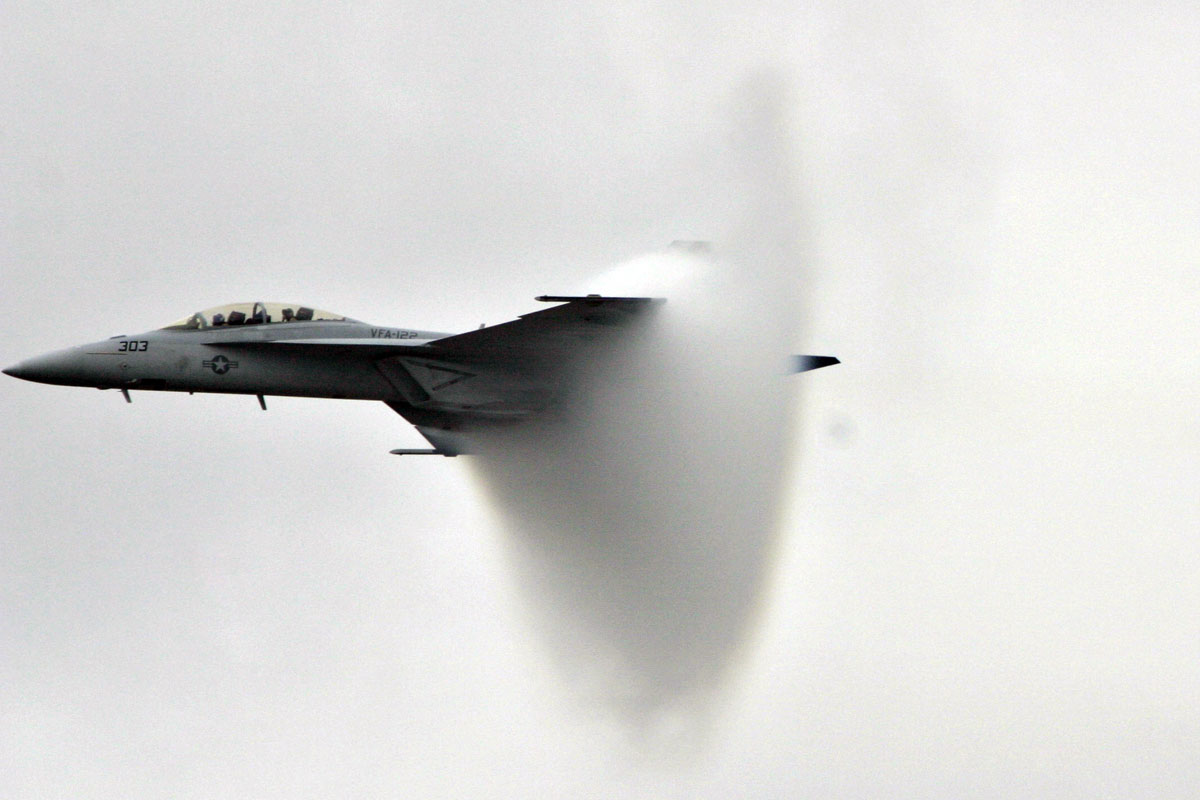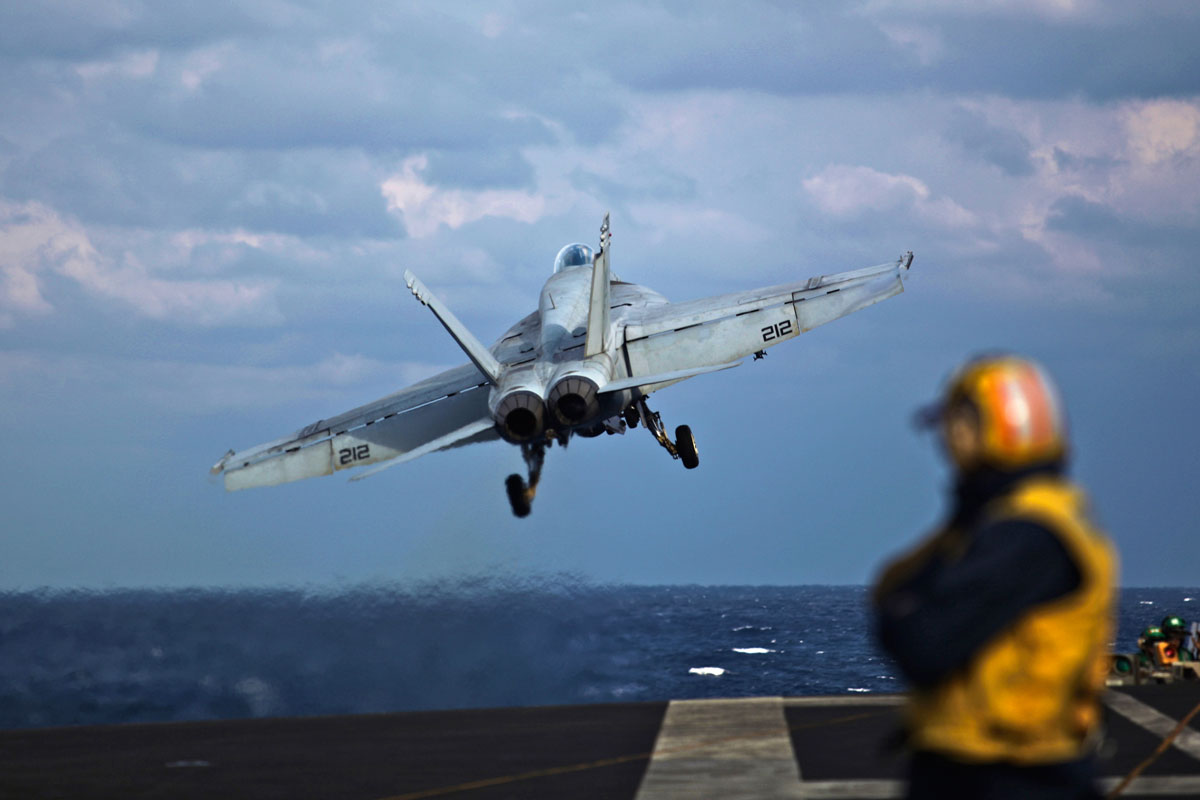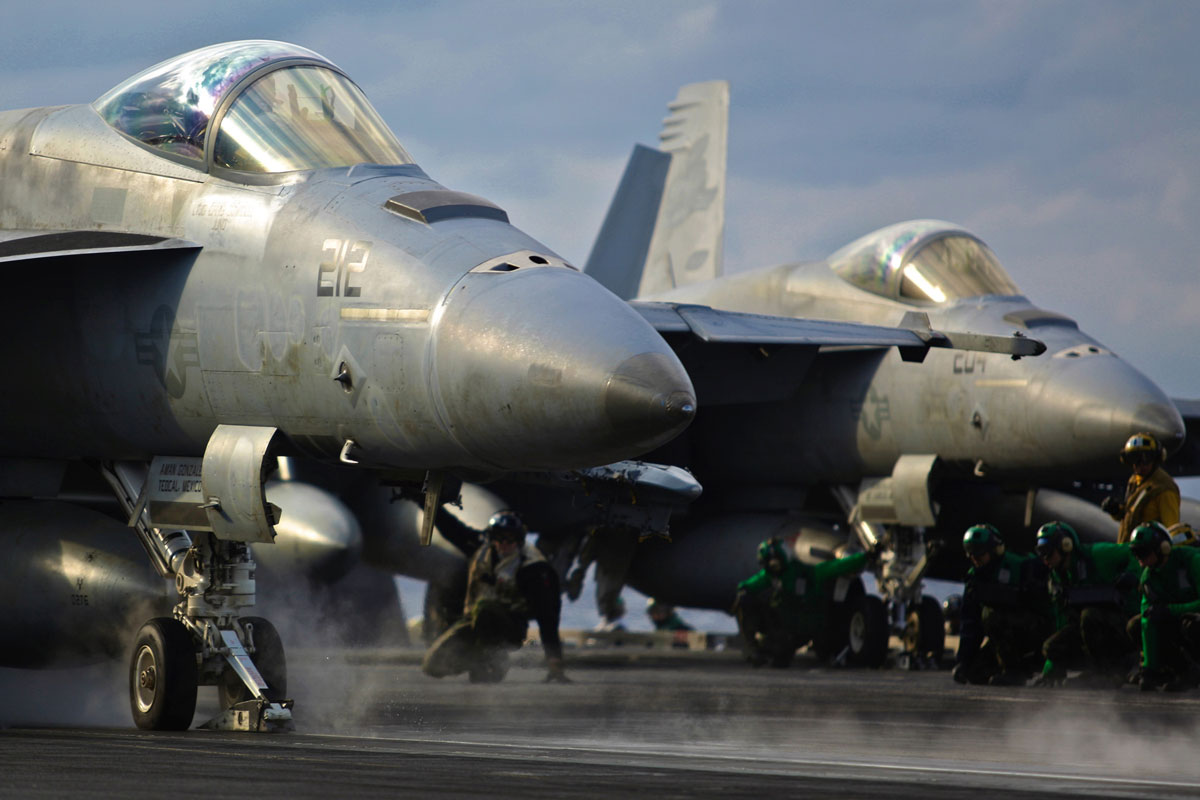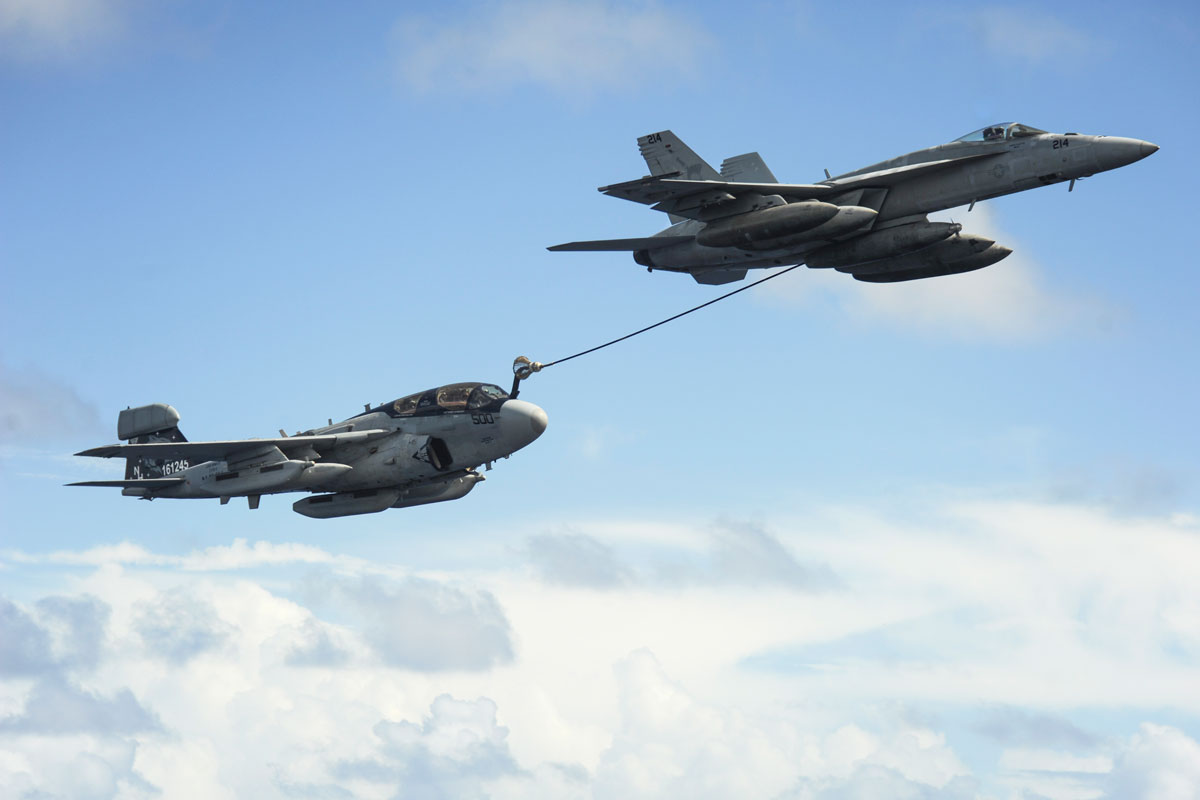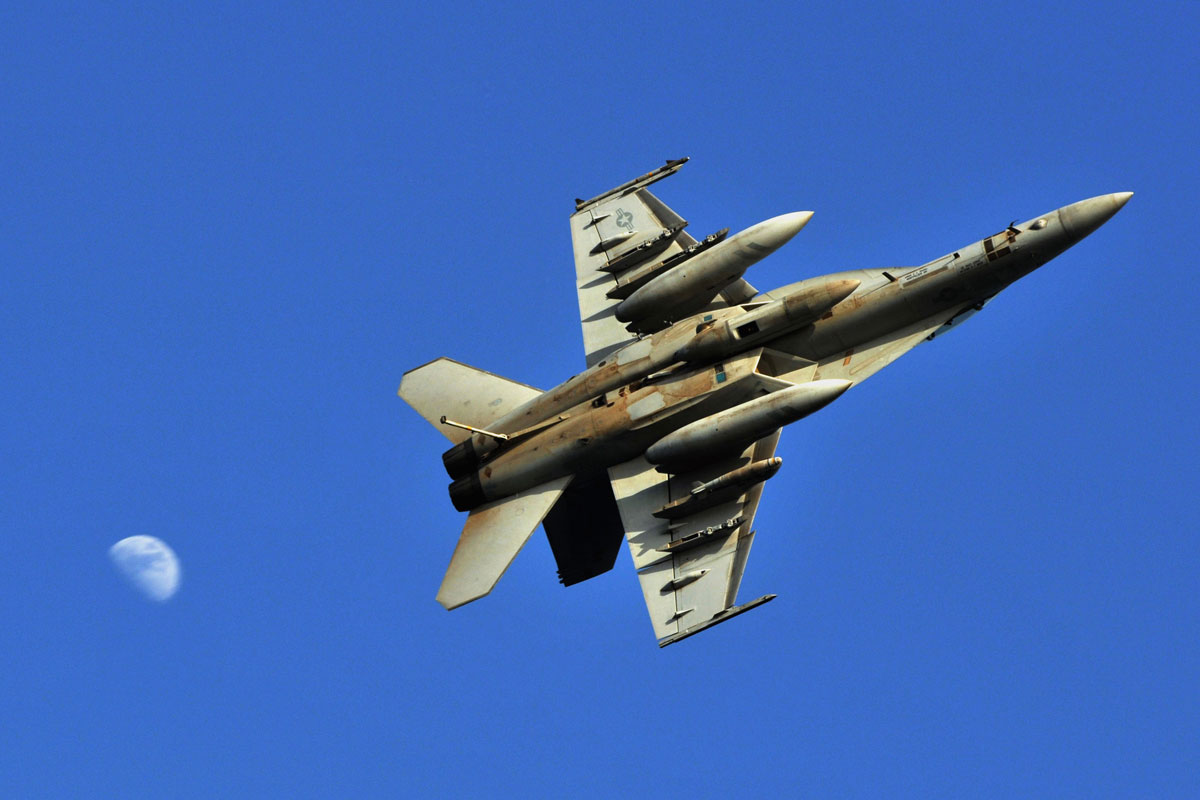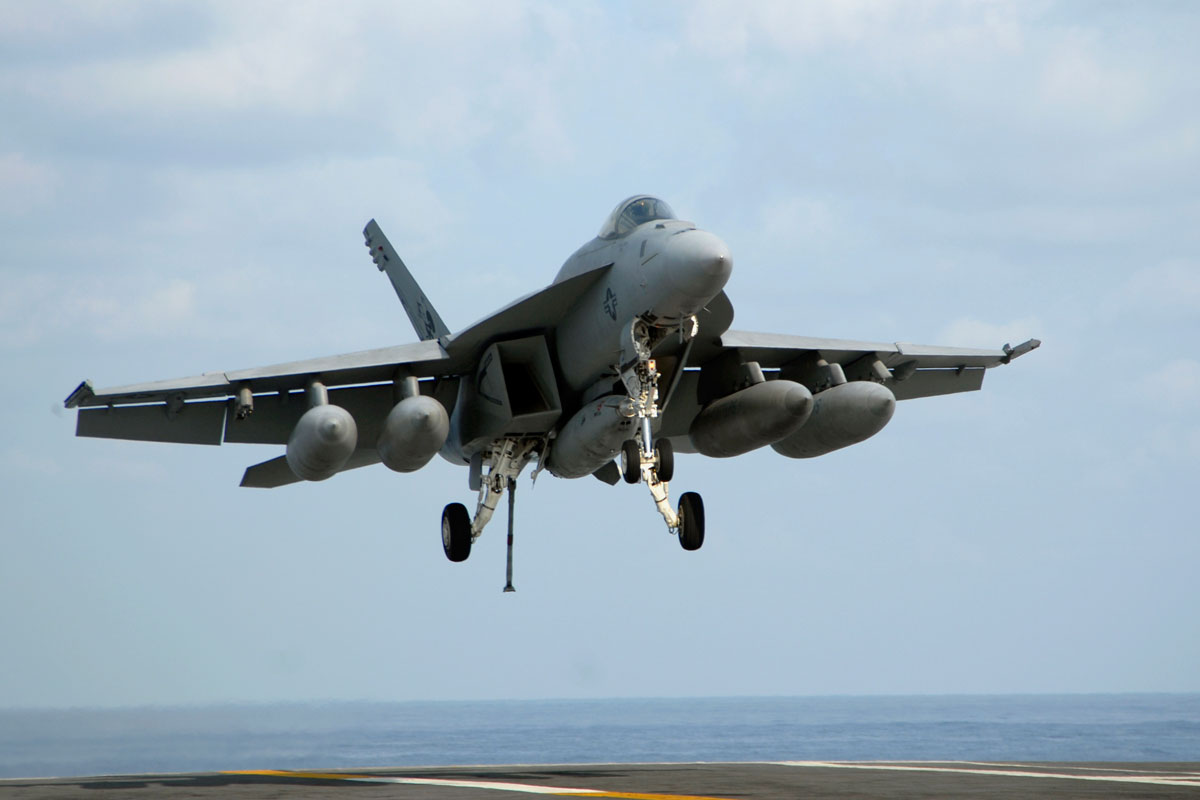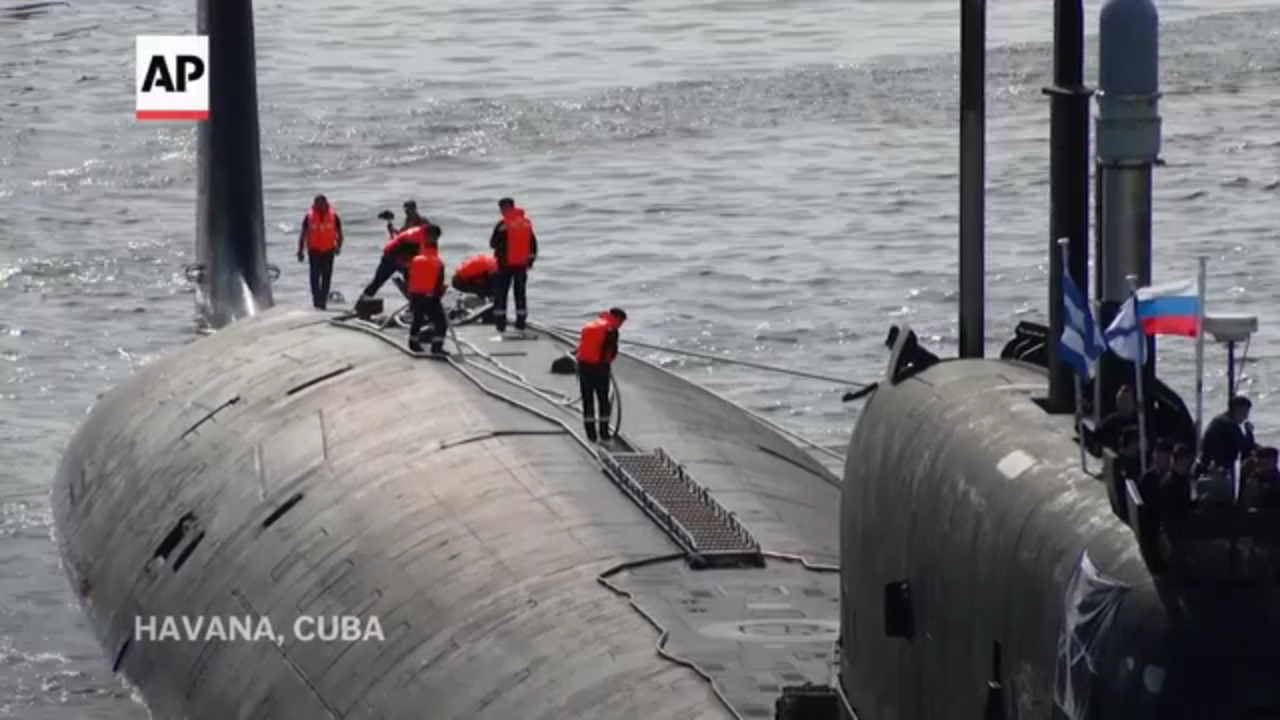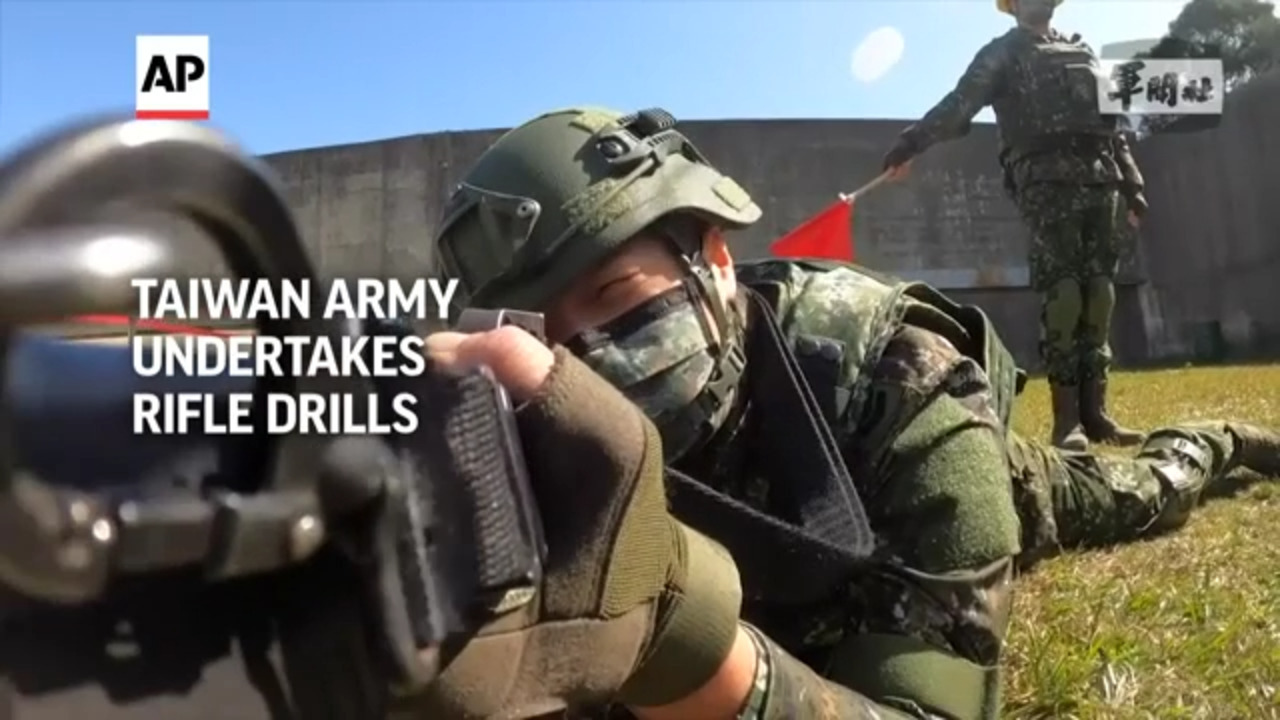Manufacturer: Boeing
Service: USN Speed: Mach 1.7 Range: 1,275 nm Armament: One M61A1/A2; AIM 9 Sidewinder, AIM-9X, AIM 7 Sparrow, AIM-120 AMRAAM, Harpoon, Harm, SLAM, SLAM-ER, Maverick missiles; Joint Stand-Off Weapon; Joint Direct Attack Munition; Data Link Pod; Paveway Laser Guided BombThe F/A-18E/F Super Hornet is the U.S. Navy’s primary strike and air superiority aircraft. It is an updated version of the F-18C/D, featuring a 20 percent larger airframe, 7,000 lb heavier empty weight, and 15,000 lb heavier maximum weight than the original Hornet. The Super Hornet carries 33 percent more internal fuel, increasing mission range by 41 percent and endurance by 50 percent over the earlier Hornet.
The F/A-18 E/F acquisition program was an unparalleled success. The aircraft emerged from Engineering and Manufacturing Development meeting all of its performance requirements on cost, on schedule and 400 pounds under weight. All of this was verified in Operational Verification testing, the final exam, passing with flying colors receiving the highest possible endorsement.
The first operational cruise of Super Hornet, F/A-18 E, was with VFA-115 onboard the USS Abraham Lincoln (CVN 72) on July 24, 2002, and saw initial combat action on Nov. 6, 2002, when they participated in a strike on hostile targets in the "no-fly" zone in Iraq.
Super Hornet, flew combat sorties from Abraham Lincoln during Southern Watch, demonstrating reliability and an increased range and payload capability. VFA 115 embarked aboard Lincoln expended twice the amount of bombs as other squadrons in their airwing (with 100% accuracy) and met and exceeded all readiness requirements while on deployment. The Super Hornet cost per flight hour is 40% of the F-14 Tomcat and requires 75% less labor hours per flight hour.
The forward fuselage is unchanged from the C/D Hornet, but the remainder of the aircraft shares little with earlier F/A-18C/D models. The fuselage was stretched by 34 inches to make room for fuel and future avionics upgrades and increased the wing area by 25%. However, the Super Hornet has 42% fewer structural parts than the original Hornet design. The General Electric F414 engine, developed from the Hornet's F404, has 35% additional thrust over most of the aircraft's flight envelope. The Super Hornet can return to an aircraft carrier with a larger load of unspent fuel and munitions than the original Hornet.
Other differences include approximately rectangular intakes for the engines and two extra wing hard points for payload (for a total of 11), retaining previous hardpoints on the bottom centerline, wingtips, and two conformal fuselage positions. Among the most significant aerodynamic changes are the enlarged leading edge extensions which provide improved vortex lifting characteristics in high angle of attack maneuvers, and reduce the static stability margin to enhance pitching characteristics. This results in pitch rates in excess of 40 degrees per second, and high resistance to departure from controlled flight.
The F/A-18E/F Super Hornet is an attack aircraft as well as a fighter through selected use of external equipment and advanced networking capabilities to accomplish specific missions. This “force multiplier” capability gives the operational commander more flexibility in employing tactical aircraft in a rapidly changing battle scenario. In its fighter mode, it serves as escort and fleet air defense. In its attack mode, it provides force projection, interdiction, and close and deep air support.
